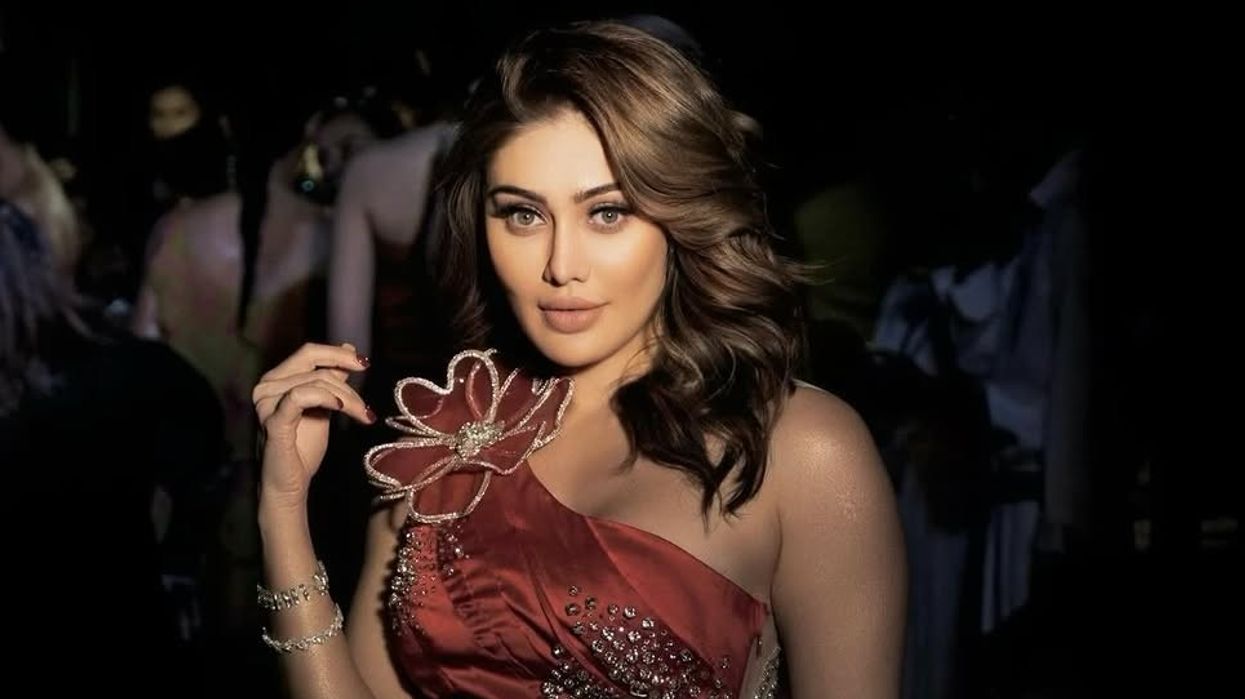After the debacle of his last film Namastey England (2018), Arjun Kapoor seems quite psyched up about his latest release, India’s Most Wanted. The film revolves around a group of Intelligence Bureau officers who, without any support from their department, sets out to capture India’s Most Wanted terrorist from Nepal. This is the first espionage thriller for the young actor who started out almost seven years ago.
Ahead of the release of the Raj Kumar Gupta directorial, Eastern Eye caught up with Arjun Kapoor in Mumbai to have a conversation on his latest offering. In this interview, Kapoor talks in detail about India’s Most Wanted, how was it to shoot at real locations and if realistic cinema has started attracting him more than before.
The actor also opens up about the kind of characters that he wants to play ahead in his career and why his second film Aurangzeb would have made more money had it released in today’s times. Excerpts...
You shot for India’s Most Wanted in cities like Patna, Kathmandu and Pokhara. Did you face any problems while shooting at real locations?
The makers were told that I might say no to shoot at such locations for various reasons, security being one of them. But I had already visited Patna during the promotions of Tever (2015). I had spent one full day in the city.
While doing India’s Most Wanted, I felt that if I do not go to shoot the film at real locations, the audience would not connect to it. If I do not go to Golghar in Patna and shoot it somewhere in Mumbai and use that shot in the movie, people will catch it and reject the film.
I always wanted that the film should look real because it is based on a real story. The (Bihar) government was very kind. The police force there also helped us. They gave us protection. People there just wanted me to wave hands, talk to them and say ‘Hi’ to them, which is normal. That happens everywhere I go to shoot.
When we went to Nepal, we realized Pokhra is such an underrated place. It has everything, from snow-clad mountains to lakes. In Kathmandu, people were so helpful. It’s such a nice place. We have made a very difficult film, but, touchwood, by the grace of God, people who helped us made it much easier.
Since the film is inspired by true events, how much research did you do on your own to understand your character better?
See, when the director is himself writing the film, half of your job is done. Raj Kumara Gupta sir has untiringly worked on this script for three years. He waited patiently to make it the right way. The whole research was his. When I came onboard, I realized that he had already done research on my character as well.
During my preparation, I got the chance to meet some IB officers, not the ones who were a part of the mission. Raj sir wanted me to understand the mindset of an IB officer. When we talk about IB officers and undercover agents, we think of James Bond and Mission Impossible. We don’t know anything about such people in reality. When I met them, I realized they are just like any other working professional. They look like a regular 9-5 job people. But they have this mental understanding and astuteness to be able to be a part of the Intelligent Bureau.
We haven’t seen you in realistic films before.
That is why I did this film.
So, can we say you are also entering the territory of realistic cinema?
See, I have done Aurangzeb (2013) also. That was a very realistic film for me, though an extremely underrated one. The film did not get its due. I feel if it had released today, it would have been a profitable venture for the makers.
It was the first song-less thriller for Yash Raj Films. I played a double role in the movie, but it was not about mistaken identity. It was not an Anees Bazmee comedy or a Rowdy Rathore (2012). It was a very gritty film. Finding Fanny (2014) was also a realistic film for me and so was Ishaqzaade (2012). Ishaqzaade dealt with the topic of honour-killing and casteism. These social evils are still prevalent in our society. So, I have always been a part of such films.
See, I am a producer’s son and have done commercial front-footed films also. I feel I am typecast in a certain image, especially after doing such films as Tever and Gunday (2014). But when you talk about Ishaqzaade, you only remember “Chokra Jawan” and, similarly, when you talk about Ki & Ka (2016), you remember “High Heel”. You forget the sensitive issues it dealt with during those times, you know. I have always, in my own way, believed that I am doing films that have that texture.
Yasin Bhatkal, the terrorist who claimed so many innocent lives, is still in jail...
The fact that he is still in jail boils my blood. I really hate the fact that we are discussing him. We did not even talk about him in the film with his name, primarily because we don’t want to give such an evil man that respect.
We wanted to tell a story about those five or six men who put their lives at risk rather than speaking about that evil man. So, if you see, you will find that we have not spoken about his name.
My blood boils when I know the fact that there is a man who has killed over 400 people and who has been tried, but he is still alive. We are taking care of him every day with our tax money. He is still allowed to question whether he is guilty or not guilty. I hate it and I wish somebody does anything about it. This film is my way of saying that bad people deserve to be behind bars. They deserve not to be a part of our social environment because for far too long, people have been getting away with it. Suppose if we had not stopped this man six years ago, how many more people would have lost their lives.
Before Raj Kumar Gupta approached you for this film, how familiar were you with this story?
I did not know much. I just knew that all these blasts happened. I knew these serial blasts were interconnected and were carried out by one man. I knew they had connections to one terrorist organization.
These blasts happened a decade ago. So, over a period of time, your memory about minute details fades away and what all you remember is the main incident. But when I read this script, I started recollecting where I was when these blasts happened. Suddenly, I felt I was reliving those moments. But frankly speaking, I did not know anything about this man or when he was caught, etc. So, the day I read the script, I said yes to it.
What kind of roles do you want to focus on now?
Genuinely, every day when you wake up, you want to do new, new things. So, it all depends on the material offered to you. I never knew I was ready to do an espionage film, but when India’s Most Wanted came to me, I thought I was quite excited about the material.
Since I am selfish, I want to do all kinds of films. I like the genre of thrillers, dramas and action films. Sensible and mature subjects attract me. This is the new find that I had through India’s Most Wanted, so I am in for it. Commercial films I would always continue doing because, I feel, that is the way to reach youth and the heartland people who step out once in a while to watch a film because, you know, they want to lighten their day. So, I think, I want to maintain this balance and do all kinds of films.
India's Most Wanted is running successfully in cinemas near you.














 Charli XCX defends her Glastonbury set, calling autotune criticism outdated and dull BBC
Charli XCX defends her Glastonbury set, calling autotune criticism outdated and dull BBC 
 Kareena Kapoor says the incident left their children Taimur and Jeh shakenGetty Images
Kareena Kapoor says the incident left their children Taimur and Jeh shakenGetty Images  Kareena and Saif are now focusing on healing as a family after the traumatic episodeGetty Images
Kareena and Saif are now focusing on healing as a family after the traumatic episodeGetty Images 
 Festivalgoers watch British band Wolf Alice perform on the Other Stage on the final day of the Glastonbury festival Getty Images
Festivalgoers watch British band Wolf Alice perform on the Other Stage on the final day of the Glastonbury festival Getty Images 
 Shefali Jariwala death raises concern over anti ageing drugs and self medication Instagram/shefalijariwala
Shefali Jariwala death raises concern over anti ageing drugs and self medication Instagram/shefalijariwala  Anti ageing pills found at Shefali Jariwala home spark health safety debate Instagram/shefalijariwala
Anti ageing pills found at Shefali Jariwala home spark health safety debate Instagram/shefalijariwala